Alexandr Klimchik
LS2N - équipe ReV, IMT Atlantique - DAPI, LS2N
MSA - Technique for Stiffness Modeling of Manipulators with Complex and Hybrid Structures
Nov 19, 2025Abstract:The paper presents a systematic approach for stiffness modeling of manipulators with complex and hybrid structures using matrix structural analysis. In contrast to previous results, it is suitable for mixed architectures containing closed-loops, flexible links, rigid connections, passive and elastic joints with external loadings and preloadings. The proposed approach produces the Cartesian stiffness matrices in a semi-analytical manner. It presents the manipulator stiffness model as a set of conventional equations describing the link elasticities that are supplemented by a set of constraints describing connections between links. Its allows user straightforward aggregation of stiffness model equations avoiding traditional column/row merging procedures in the extended stiffness matrix. Advantages of this approach are illustrated by stiffness analysis of NaVaRo manipulator.
A Genetic Approach to Gradient-Free Kinodynamic Planning in Uneven Terrains
Apr 17, 2025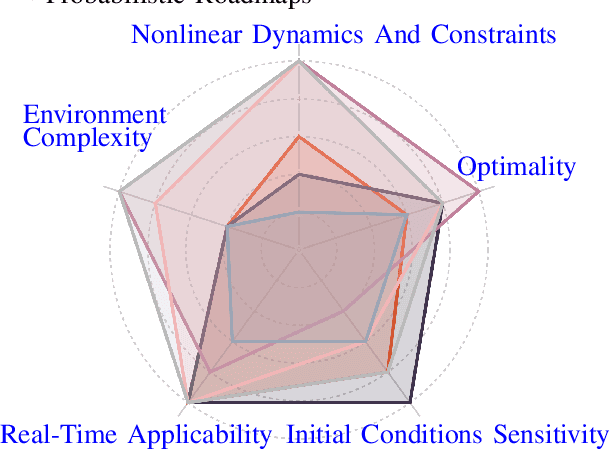
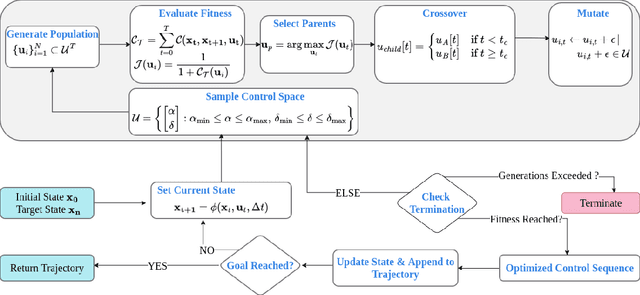
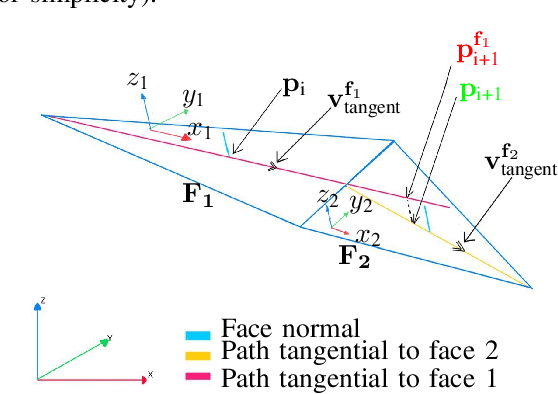
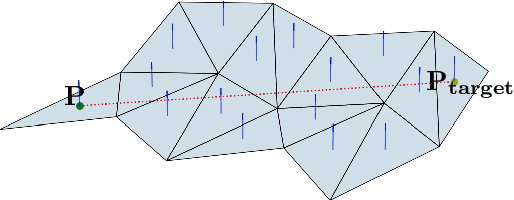
Abstract:This paper proposes a genetic algorithm-based kinodynamic planning algorithm (GAKD) for car-like vehicles navigating uneven terrains modeled as triangular meshes. The algorithm's distinct feature is trajectory optimization over a fixed-length receding horizon using a genetic algorithm with heuristic-based mutation, ensuring the vehicle's controls remain within its valid operational range. By addressing challenges posed by uneven terrain meshes, such as changing face normals, GAKD offers a practical solution for path planning in complex environments. Comparative evaluations against Model Predictive Path Integral (MPPI) and log-MPPI methods show that GAKD achieves up to 20 percent improvement in traversability cost while maintaining comparable path length. These results demonstrate GAKD's potential in improving vehicle navigation on challenging terrains.
Resilient Timed Elastic Band Planner for Collision-Free Navigation in Unknown Environments
Dec 04, 2024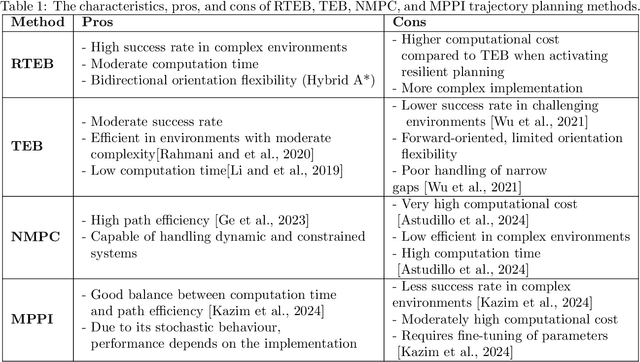
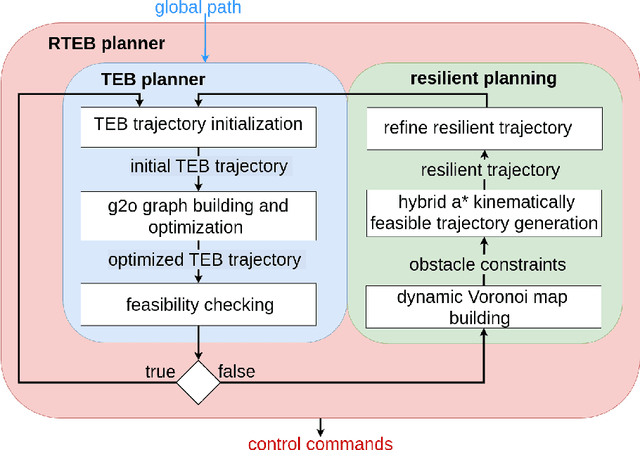


Abstract:In autonomous navigation, trajectory replanning, refinement, and control command generation are essential for effective motion planning. This paper presents a resilient approach to trajectory replanning addressing scenarios where the initial planner's solution becomes infeasible. The proposed method incorporates a hybrid A* algorithm to generate feasible trajectories when the primary planner fails and applies a soft constraints-based smoothing technique to refine these trajectories, ensuring continuity, obstacle avoidance, and kinematic feasibility. Obstacle constraints are modelled using a dynamic Voronoi map to improve navigation through narrow passages. This approach enhances the consistency of trajectory planning, speeds up convergence, and meets real-time computational requirements. In environments with around 30\% or higher obstacle density, the ratio of free space before and after placing new obstacles, the Resilient Timed Elastic Band (RTEB) planner achieves approximately 20\% reduction in traverse distance, traverse time, and control effort compared to the Timed Elastic Band (TEB) planner and Nonlinear Model Predictive Control (NMPC) planner. These improvements demonstrate the RTEB planner's potential for application in field robotics, particularly in agricultural and industrial environments, where navigating unstructured terrain is crucial for ensuring efficiency and operational resilience.
Robust explicit model predictive control for hybrid linear systems with parameter uncertainties
Jul 23, 2023Abstract:Explicit model-predictive control (MPC) is a widely used control design method that employs optimization tools to find control policies offline; commonly it is posed as a semi-definite program (SDP) or as a mixed-integer SDP in the case of hybrid systems. However, mixed-integer SDPs are computationally expensive, motivating alternative formulations, such as zonotope-based MPC (zonotopes are a special type of symmetric polytopes). In this paper, we propose a robust explicit MPC method applicable to hybrid systems. More precisely, we extend existing zonotope-based MPC methods to account for multiplicative parametric uncertainty. Additionally, we propose a convex zonotope order reduction method that takes advantage of the iterative structure of the zonotope propagation problem to promote diagonal blocks in the zonotope generators and lower the number of decision variables. Finally, we developed a quasi-time-free policy choice algorithm, allowing the system to start from any point on the trajectory and avoid chattering associated with discrete switching of linear control policies based on the current state's membership in state-space regions. Last but not least, we verify the validity of the proposed methods on two experimental setups, varying physical parameters between experiments.
Residual Dynamics Learning for Trajectory Tracking for Multi-rotor Aerial Vehicles
May 25, 2023Abstract:This paper presents a technique to cope with the gap between high-level planning, e.g., reference trajectory tracking, and low-level controlling using a learning-based method in the plan-based control paradigm. The technique improves the smoothness of maneuvering through cluttered environments, especially targeting low-speed velocity profiles. In such a profile, external aerodynamic effects that are applied on the quadrotor can be neglected. Hence, we used a simplified motion model to represent the motion of the quadrotor when formulating the Nonlinear Model Predictive Control (NMPC)-based local planner. However, the simplified motion model causes residual dynamics between the high-level planner and the low-level controller. The Sparse Gaussian Process Regression-based technique is proposed to reduce these residual dynamics. The proposed technique is compared with Data-Driven MPC. The comparison results yield that an augmented residual dynamics model-based planner helps to reduce the nominal model error by a factor of 2 on average. Further, we compared the proposed complete framework with four other approaches. The proposed approach outperformed the others in terms of tracking the reference trajectory without colliding with obstacles with less flight time without losing computational efficiency.
Optimization-based Motion Planning for Multirotor Aerial Vehicles: a Review
Aug 31, 2022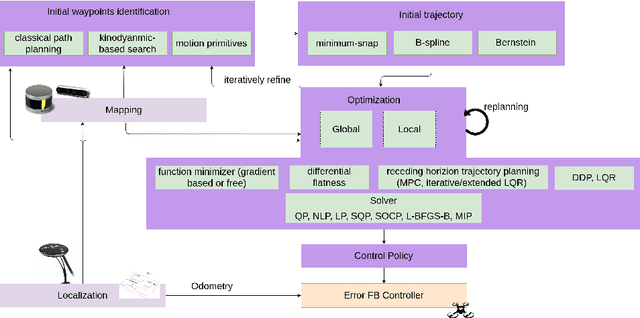
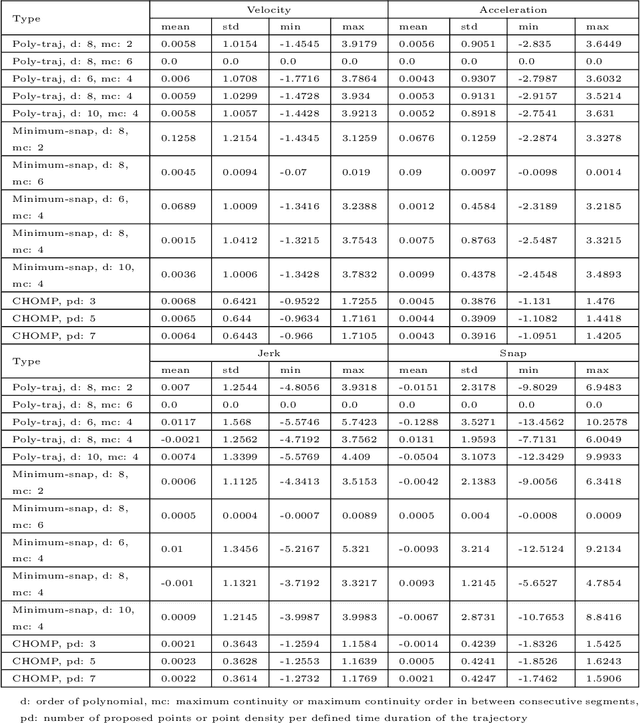
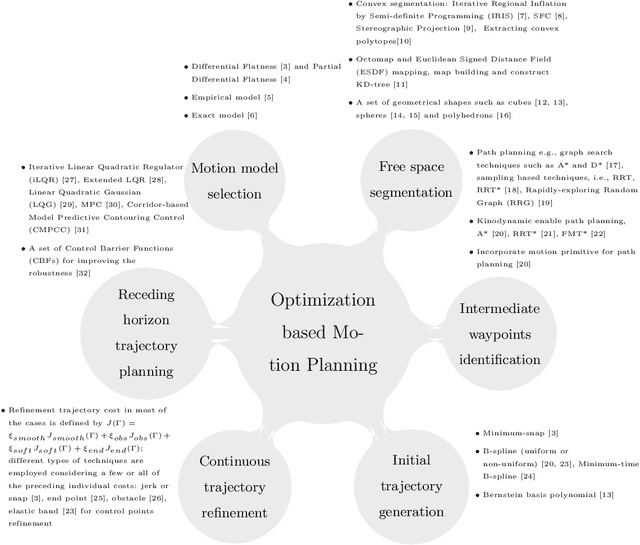
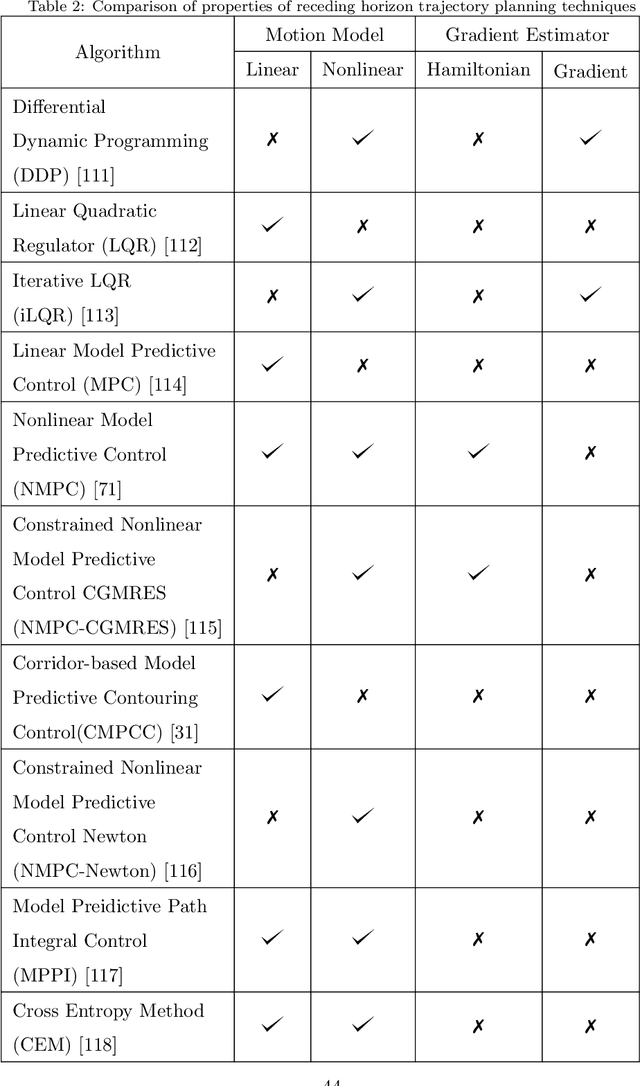
Abstract:In general, optimal motion planning can be performed both as local and as global. In such a planning, the choice in favor of either local or global planning technique mainly depends on whether the environmental conditions are dynamic or static. Hence, the most adequate choice is to use local planning or local planning alongside global planning. When designing optimal motion planning both as local or as global, the key metrics to bear in mind are execution time, asymptotic optimality, quick reaction on dynamic obstacles. Such planning approaches can address the aforesaid target metrics more efficiently compared to other approaches such as path planning followed by smoothing. Thus, the foremost objective of this study is to analyse related literature in order to understand how the motion planning, specially trajectory planning, problem is formulated, when being applied for generating optimal trajectories in real-time for Multirotor Aerial Vehicles (MAVs), impact the listed metrics. As result of the research, trajectory planning problem was broken down into a set of subproblems, the lists of methods for addressing each of the problems were identified and described in detail. Subsequently, the most prominent results from 2010 to 2022 were summarized and presented in the form of a timeline.
Non-linear stiffness behavior of planar serial robotic manipulators
Feb 17, 2022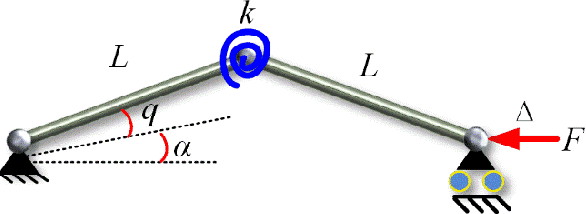

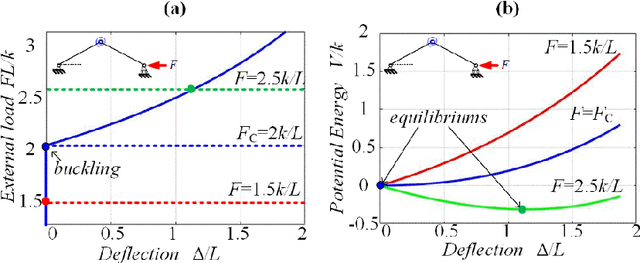
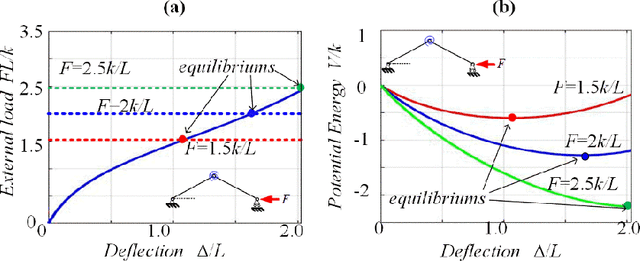
Abstract:The paper focuses on the stiffness analysis of multi-link serial planar manipulators, which may demonstrate nonlinear stiffness behavior under the compressive loading. Two important cases are considered, where the manipulator has either a straight or non-straight initial configuration. It was proved that in the first case the loading may cause the buckling if it exceeds some critical value, and the manipulator suddenly changes its straight shape and stiffness properties. For computing this critical force, a general eigenvalue-based technique was proposed that can be applied to any multi-link serial manipulator. For the second case dealing with non-straight initial configurations, a universal energy-based technique was applied that allowed to detect quasi-buckling phenomenon when it is observed very fast but not instant change of the manipulator shape and its stiffness coefficient under the loading. These results are illustrated by numerous examples of non-linear stiffness behavior of three-and four-link manipulators that are subjected to compressive force.
Optimization-based Trajectory Tracking Approach for Multi-rotor Aerial Vehicles in Unknown Environments
Feb 12, 2022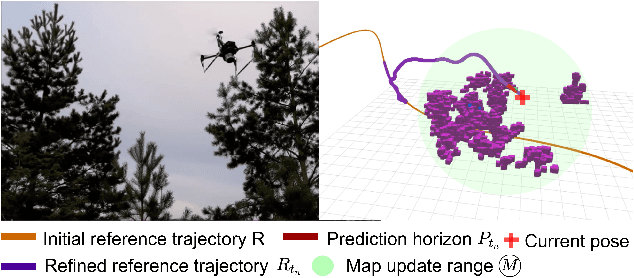
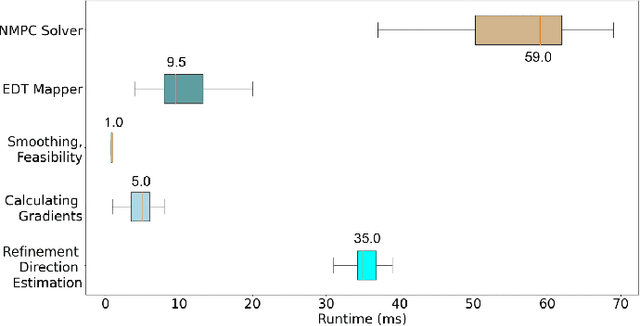

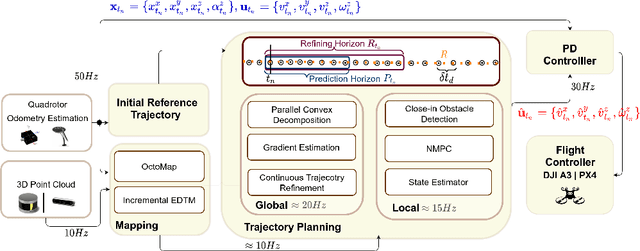
Abstract:The goal of this paper is to develop a continuous optimization-based refinement of the reference trajectory to 'push it out' of the obstacle-occupied space in the global phase for Multi-rotor Aerial Vehicles in unknown environments. Our proposed approach comprises two planners: a global planner and a local planner. The global planner refines the initial reference trajectory when the trajectory goes either through an obstacle or near an obstacle and lets the local planner calculate a near-optimal control policy. The global planner comprises two convex programming approaches: the first one helps to refine the reference trajectory, and the second one helps to recover the reference trajectory if the first approach fails to refine. The global planner mainly focuses on real-time performance and obstacles avoidance, whereas the proposed formulation of the constrained nonlinear model predictive control-based local planner ensures safety, dynamic feasibility, and the reference trajectory tracking accuracy for low-speed maneuvers, provided that local and global planners have mean computation times 0.06s (15Hz) and 0.05s (20Hz), respectively, on an NVIDIA Jetson Xavier NX computer. The results of our experiment confirmed that, in cluttered environments, the proposed approach outperformed three other approaches: sampling-based pathfinding followed by trajectory generation, a local planner, and graph-based pathfinding followed by trajectory generation.
Kinematic Control of compliant serial manipulators composed of dual-triangles
Feb 19, 2021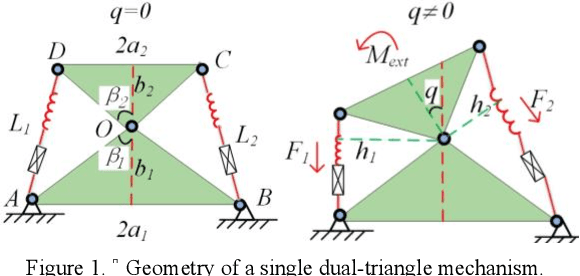
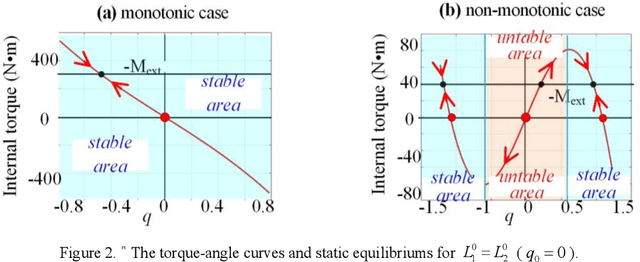
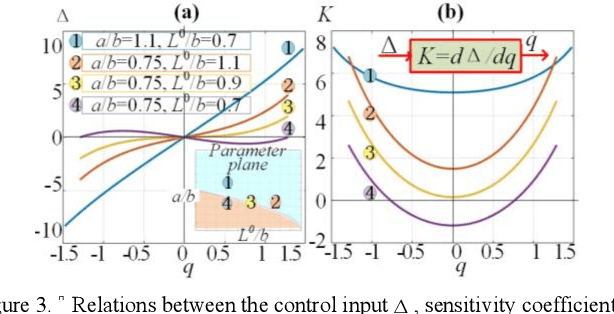

Abstract:The paper focuses on the kinematics control of a compliant serial manipulator composed of a new type of dualtriangle elastic segments. Some useful optimization techniques were applied to solve the geometric redundancy problem, ensure the stability of the manipulator configurations with respect to the external forces/torques applied to the endeffector. The efficiency of the developed control algorisms is confirmed by simulation.
* arXiv admin note: text overlap with arXiv:2011.06912
Mechanics of compliant serial manipulator composed of dual-triangle segments
Nov 13, 2020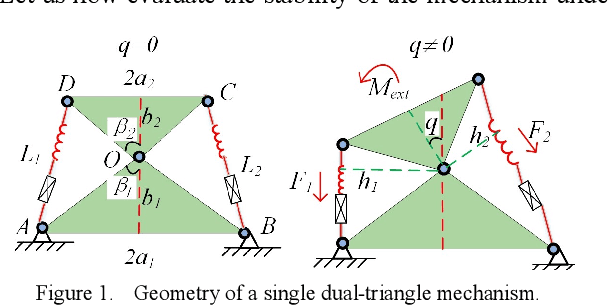
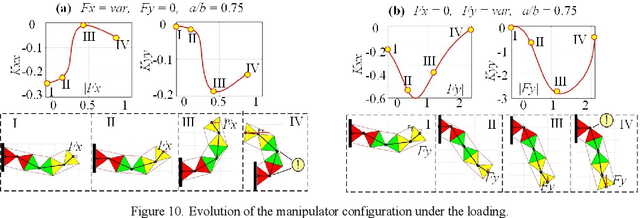
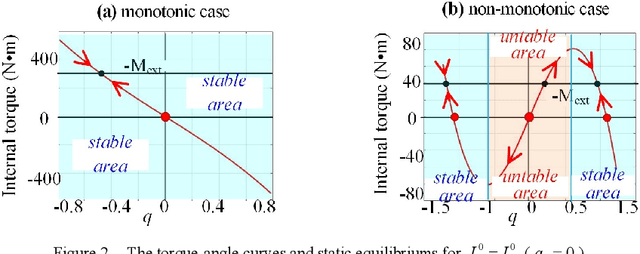

Abstract:The paper focuses on the mechanics of a compliant serial manipulator composed of new type of dual-triangle elastic segments. Both the analytical and numerical methods were used to find the manipulator stable and unstable equilibrium configurations, as well as to predict corresponding manipulator shapes. The stiffness analysis was carried on for both loaded and unloaded modes, the stiffness matrices were computed using the Virtual Joint Method (VJM). The results demonstrate that either buckling or quasi-buckling phenomenon may occur under the loading, if the manipulator corresponding initial configuration is straight or non-straight one. Relevant simulation results are presented that confirm the theoretical study.
 Add to Chrome
Add to Chrome Add to Firefox
Add to Firefox Add to Edge
Add to Edge